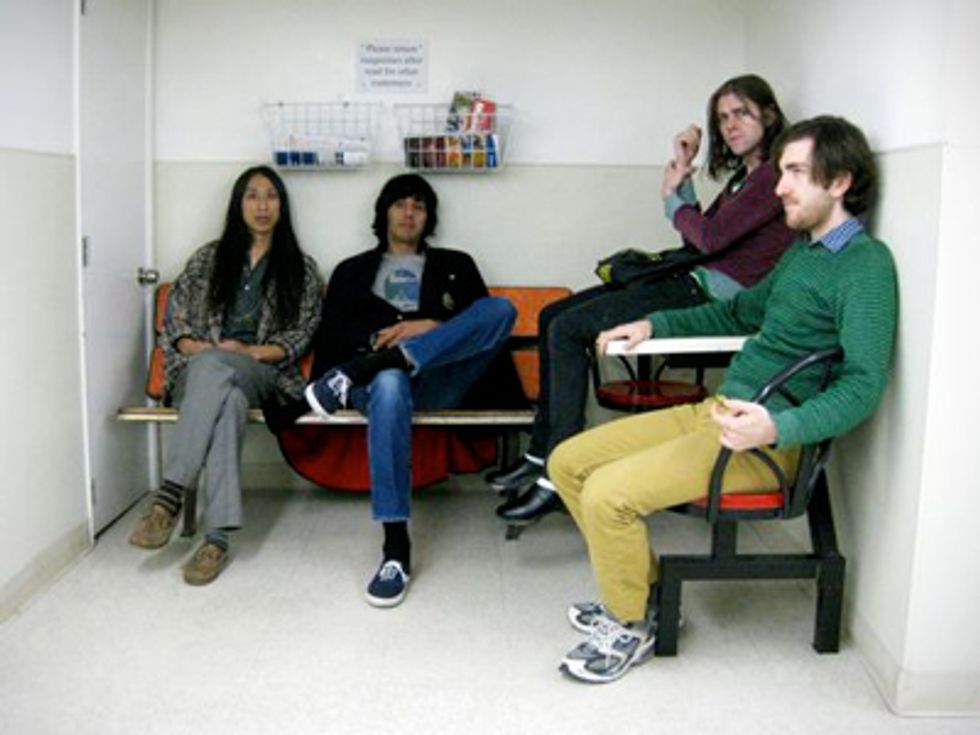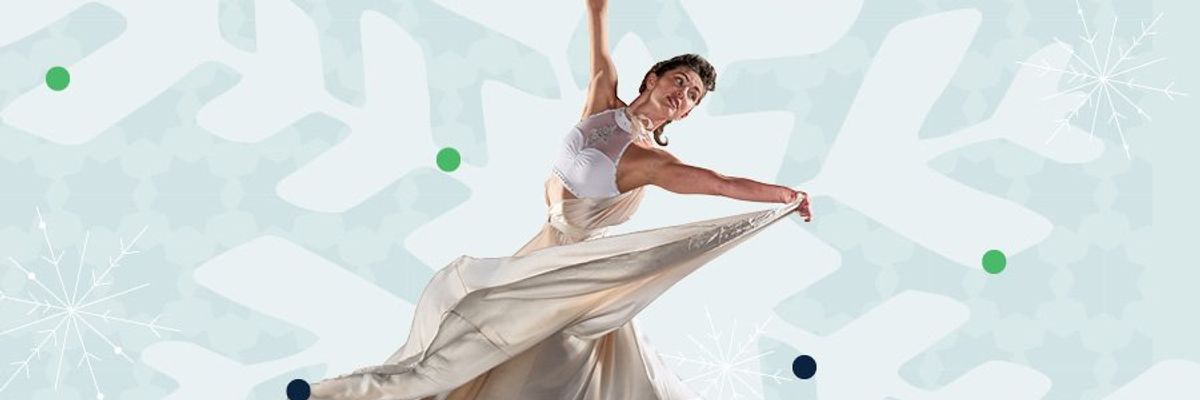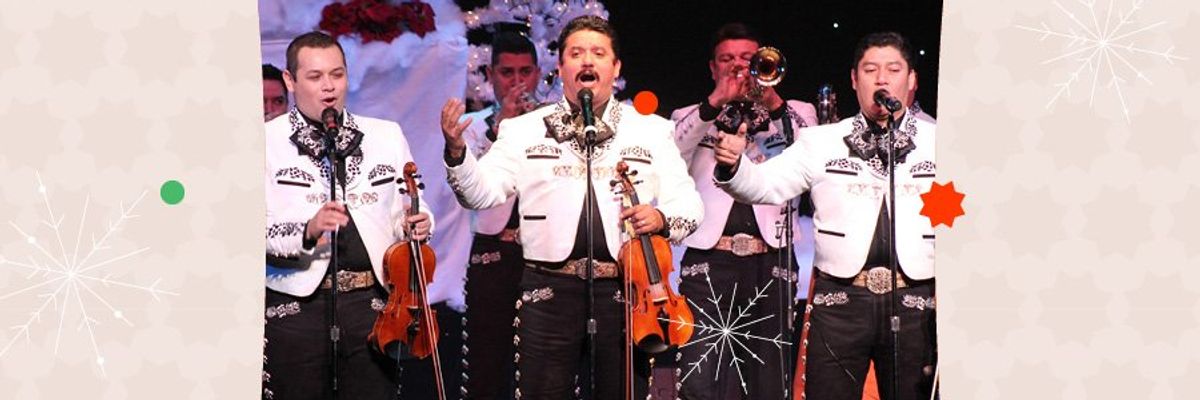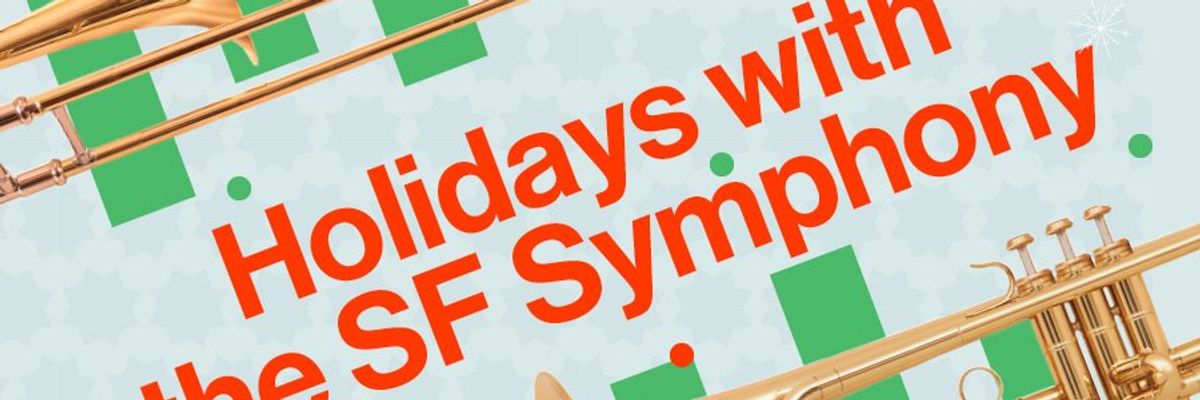Consider Ariel Pink (ne Ariel Rosenberg) the most intriguing mystery man at the chaotic house party we dub the postmodern post-punk underground. One of the most wildly imaginative music-makers around, having recorded for years on his own ultracheap lo-fi gear, the L.A. musician is now working with a relatively stable backing band that goes by the name Haunted Graffiti, which recently released the critically acclaimed, studio-quality album, Before Today, on 4AD. Overall Pink seems to have come a way from the days when he was shouting and pounding on his keyboards, alone on stage at Bottom of the Hill, while Liza Thorn of SF’s Bridez blow-dried his hair. I spoke to Pink in L.A. this week as he prepped to leave on tour -- the man and his Haunted Graffiti ply the mob with spooked sounds on Saturday, July 10, at Bimbo’s 365 Club.
Q: Any stories behind the title of the new album, Before Today?
Ariel Pink: No. Yeah. I mean, yeah. I mean, no. The story is whatever the vibration or whatever the words bring up. Whatever it makes you think of, that’s the thing I’m after.
It’s all just appearances. I’m a firm believer in the past, but there’s nothing too thought-out about it, to tell you the truth.
Q: Speaking of the cover, it kind of conjures up Dictators or Lou Reed album art.
AP: The East Coast brand of punk -- that’s the idea! We wanted to distance ourselves from the California sunshiny vibe -- just for a moment, of course. Everybody uses the same description, “Beach Boys harmonies...” I say, “C’mon, this is my broadway album!”
With each record you want to have different worlds that you take the listener to. And we take listeners to the East Coast, to the ghetto, on this one... but that all comes after the fact.
Q: So you start with the music -- how did the new album develop?
AP: We have the track listing and then it’s, what kind of face does it have? Where does this belong? It’s really hard to put a track listing together without a goal in mind and without a feel that we’re going after. We did the whole process in reverse -- we assembled the songs and settled on a track order and the flow from song to song, then we had a record but it didn’t have a face.
Half the songs I wrote almost 10 years ago. There’s recordings of them from that era, but most people haven’t heard them. The other portion were things we assembled from scratch, from the bottom up in the studio -- though not really in the studio.
There is no studio. There’s no need for a studio anymore, because studios are too expensive and no one records in a studio anymore. It really happens in someone’s house because you don’t need a giant tape machine. This is the first digital album.
The other ones were on cassette tape and eight-track, analog, on magnetic eighth-inch tape, so they had physical properties. I recorded on a Portastudio, a cheap recorder. They don’t even make ‘em anymore, because anybody who’s anybody goes digital.
Q: Was there added pressure to produce something that’s studio-quality, now that you’re on a new label, 4AD?
AP: No pressure at all. The goal is always to make the music good and not to muck it up. I did what I could with what I had in the past. Now having more and having help from people who are more technologically up to date, it increases the sound quality, I suppose.
Q: Your music puts such an original spin on the songs of yesteryear -- what are your feelings about "oldies" -- and the possibly heavy burden of influence?
AP: That’s where I’ve put my money, you know what I’m saying. It’s a great thing. I think the history of music is disappearing every year, and it’s going to be erased, and it’s going to be replaced with another narrative and lineage.
The format of records is dying out -- people who are kids now have never seen a record store, and they’re going to grow up with just a playlist on iTunes, and that will be the full extent of their commitment to music. It’ll be picture-less. There will be less albums and more fly-by-night singles.
That’s happening now, and I’m part of the age that’s delaying that thing. I’m trying to preserve that dying art form.
Q: What are you own memories of listening to records?
AP: Having the records in my hand was one thing, looking at the vinyl, and even with CDs. In five years it’ll be all gone.
I used to work in a record shop and I got a real thrill being around the records and being able to thumb through them as a hipster, store-clerk, indie-rock snob. I had a real attachment to things I discovered, because they were things that hadn’t had a light shined on them. It defined me as a person.
Nowadays everyone’s got a potpourri of music -- there are so many places to find music that it’s hard to find any stone unturned. So it’s hard to have someone defined by their playlist or music -- not that that’s a good thing.
Maybe that’s a healthier place to be than just getting fully elitist about it. I think maybe the musicians and fans of next year will be a lot more mature about things than the ones before them because they have more perspective and more ideas about the variety of ways you can go in music -- and it’s not mainstream spoon-fed dribble. That doesn’t seem to be working for either the industry or the fans.
I think fans look to many different types of music than the average listener, which is good. I feel like I’m just another little option. I’m just trying to be myself and I’m not trying to persuade anybody that I’m worth it -- there’s no value system here. It’s like another fingerprint: everyone’s fingerprints are different -- “check it out.” “Nice designs.”
--Do you see yourself as paying tribute to past performers and artists or trying to do something else?
Q: When I spoke to you a while back, you were in the midst of encouraging fans to apply to be your backing band -- how did that project work out?
AP: I didn’t start having bands back me up till halfway through that tour -- everyone else bailed out because it was too last-minute leading up to the tour. But later on, it was a fascinating and interesting experience, to have people interpreting the music. The challenge was to make it work in a live setting with no rehearsals and have me just jump in and without any of the cues that I usually have in my music, guiding me. It was a challenge, and in a way, it was a failure.
It kicked my butt to really get a tight unit, really rehearse, and work out kinks with a specific group of people. There’s no shortcut -- you have to work with people intimately and consistently. You have to have that from everyone in band -- one bad egg spoils the whole cake! Seriously, we sound like shit if one person isn’t on board like everyone else.
Q: Going back to Before Today and the songs -- what are “Butt-House Blondies”?
AP: I suppose it’s about the girl who grow up around me. All they know is that they have to breed, and they don’t have to be too smart or too dumb, and they would get stoned at 13. But no, they’re not dumb.
Q: The track "Hot Body Rub" has a sax sound you might hear from UK pop bands of the '80s like Haircut 100 or Duran Duran. Is there something about that sound that you feel is worth resurrecting?
AP: I think they were trying to tap into a similar sound back then -- the James Brown sound, which is the same one I was trying to tap into. They were being retro back then -- I wasn’t trying to be retro-retro, but that’s a typical story ...
Q: The song "Menopause Man" is so funny -- was that triggered by any real-life person or existing song?
AP: Thanks. Every once in a while you hit something new, going into the past. Everyone who says they’re trying to find a new something or other is just doing some wishful thinking. You can’t be a musician and can’t get through the web of the Matrix if you don’t look at the past -- you gotta count in your memory in order to play music.
You could be a lounge band but what makes your lounge band any different is all in the little things and nuances and the newness of every performance. The demystification is in the hands of the musicians who play the music. And once you’ve been down the road before. you can demystify the process completely and then it’s about how can you infuse any newness there. You have to relearn how to make it fresh.
Ariel Pink’s Haunted Graffiti play Saturday, July 10, at Bimbo’s 365 Club, 1025 Columbus Ave., SF. Magic Kids and Puro Instinct open. 9 p.m., $15. (415) 474-0365, bimbos365club.net





















